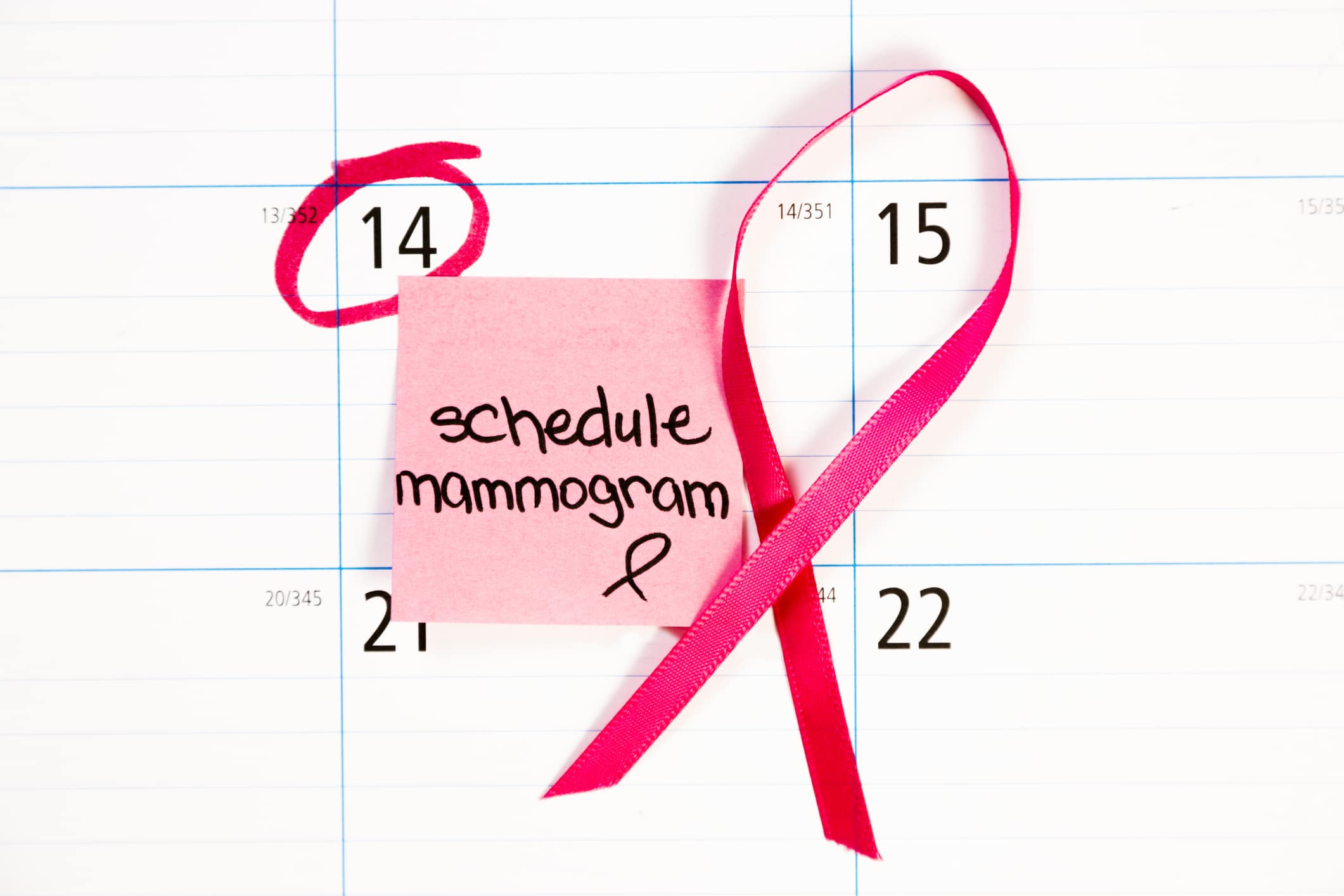
The goal of screening for breast cancer is to find it BEFORE symptoms begin (such as a lump). The earlier cancer is detected, the more likely a tumor will be smaller and more confined to the breast. This means treatment is likely to be more successful and survival rates will be higher.
The American College of Radiology currently recommends that women with an average risk of breast cancer get annual screening mammograms, starting at age 40. They recommend a risk assessment at age 30 to determine if earlier screening is needed.
If you have risk factors, such as a family history of breast cancer, talk to your doctor about the appropriate time to begin screening mammograms.
If you have symptoms of breast cancer, don’t delay making an appointment with your doctor. Your doctor can write a physician’s order for a diagnostic mammogram.
Symptoms include:
- Breast lump
- Skin dimpling or skin looking like an orange peel
- Nipple retraction (turning inward)
- Nipple/areola skin that is red, dry, flaking or thickened
- Nipple discharge other than breast milk (bloody or clear like water)
- Swollen lymph nodes (under the arm or around the collar bone – these can sometimes be felt even before the original tumor in the breast)
- Swelling of the breast (even if no pain)
- Breast or nipple pain that persists in one pinpoint spot and never goes away, especially if associated with a breast lump
3D Mammography is Now Available at:
- UofL Health – Brown Cancer Center, call 502-562-4361, option 1
- UofL Health – Brown Cancer Center – Mobile Screening Unit, call 502-681-1405
- UofL Health – Mary & Elizabeth Hospital, call 502-681-1405
- UofL Health – Medical Center East, call 502-681-1405
- UofL Health – Medical Center Northeast – Breast Care Center, call 502-681-1405
- UofL Health – South Hospital, call 502-681-1405
- UofL Health – Shelbyville Hospital, call 502-681-1405









